Hiroshima is the site where the first of two atomic bombs were dropped on Japan during World War II. I had imagined Hiroshima to be a radioactive wasteland, a terrible, lingering reminder of the horror of WWII. As we learned on our day trip to Hiroshima, that is not the case at all. Hiroshima is a thriving city, very much alive and well, with barely a trace of the destruction that occurred here seventy years ago.
A Day Trip to Hiroshima
Getting from Kyoto to Hiroshima
A day trip to Hiroshima is very easy from Kyoto. If you look at a map of Japan, Hiroshima is quite a distance away from Kyoto, 354 kilometers, to be exact. In a car, this journey would take almost five hours. Enter in the Shinkansen. A journey on these legendary “bullet trains” cuts the travel time by more than half, taking just over two hours to travel from Kyoto to Hiroshima.
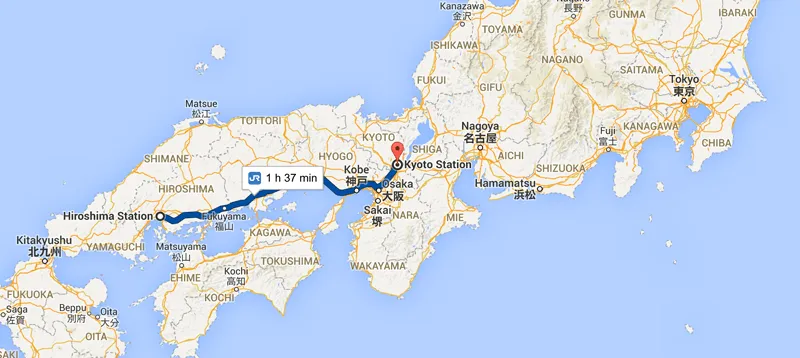
There are several Shinkansen lines that make the journey between Kyoto and Hiroshima. Since we had the JR Pass, we rode on the Hikari line from Kyoto Station to Shin-Osaka, which took only fourteen minutes. At Shin-Osaka we changed trains, traveling on the Sakura line to Hiroshima for a travel time of one hour and 27 minutes. Trains run every half an hour and have plenty of extra seats. But don’t be late! I read that the Shinkansen is rarely late, averaging within 6 seconds of the scheduled times.
Getting from the Train Station to the Hiroshima Sites
From the Hiroshima Station there are several ways to get to the Hiroshima Peace Memorial. Taxis are the easiest and most comfortable way, but also the most expensive. Walking is a possibility and it takes about 30 minutes according to Google maps with a distance of 2.6 km.
We chose to take the tram. Trams run very frequently, drop passengers off right at the Atomic Bomb Dome. During this twenty minute journey we got our first views of Hiroshima and the large, thriving city that it is.
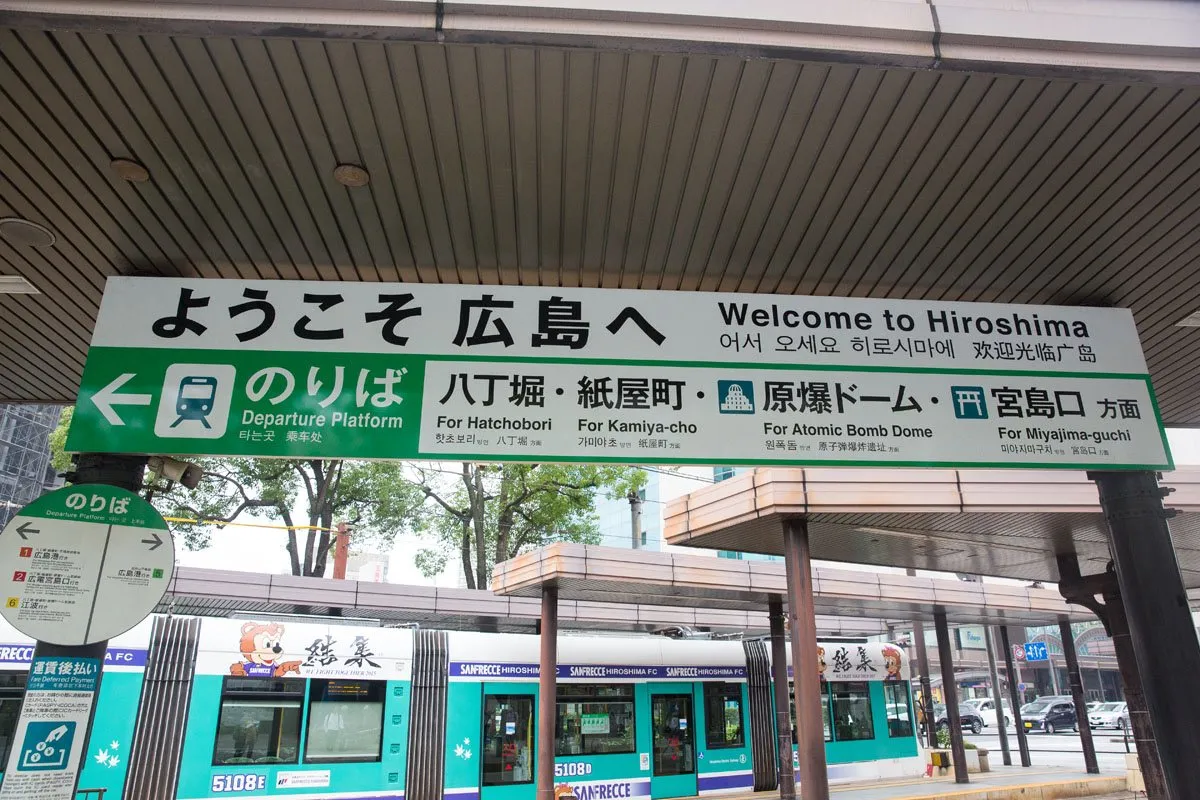
The main sites are all clustered together in and around the Memorial Peace Park. If you take the tram, get off at M10, Genbaku Dome Mae, the stop for the Atomic Bomb Dome.
How to Use This Map: Click the tab in the top left hand corner of the map to view the layers. You can click the check marks to hide or show layers. If you click the icons on the map, you can get more information about each point of interest.
If you click the star next to the title of the map, this map will be added to your Google Maps account. To view it on your phone or computer, open Google Maps, click the menu button, go to “Your Places,” click Maps, and you will see this map on your list.
Historical Background of Hiroshima
On August 6, 1945, the Enola Gay dropped the first of two atomic bombs over Japan. The atomic bomb exploded 600 meters in the air over Hiroshima. The blast and the heat wave leveled the city almost instantly, leaving only several well constructed buildings somewhat intact.
At the hypocenter, people were killed instantly. Further away from the hypocenter there were “survivors,” but many of these people died within a few days to a few weeks, victims of radiation sickness. Those people who lived on the outskirts of Hiroshima survived the bombing but many of them were afflicted with cancer and other medical problems in later years.
After the bombing, buildings in Hiroshima were dismantled as part of the rebuilding process. The Atomic Bomb Dome, known before the bombing of Hiroshima as the Hiroshima Prefectural Industrial Promotion hall, was intact enough that it was one of the more difficult buildings to dismantle, so it was saved to the end. As photos and videos of the Hiroshima destruction were aired, the Atomic Bomb Dome became a symbol of the bombing of Hiroshima and it was left in place.
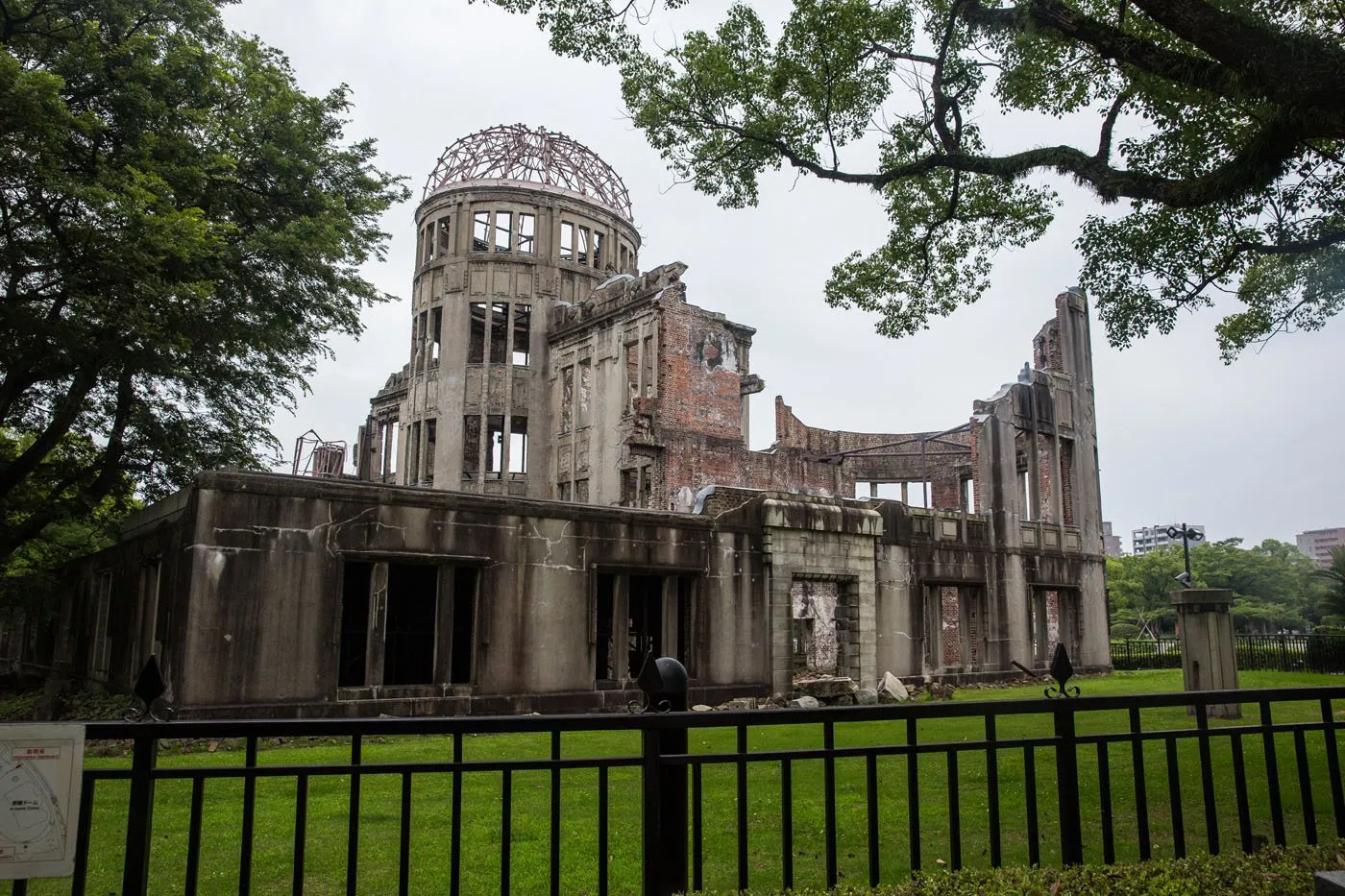
Now the Atomic Bomb Dome sits behind a fence and is surrounded by green grass and trees. Highrises tower in the distance, people are going about their normal lives, and other than seeing this building, I never would have imagined the level of destruction that existed here over seventy-five years ago.
Ground Zero
From the Atomic Bomb Dome we walked five minutes to the east, into town, looking for the hypocenter of the bombing, also known as Ground Zero. This is a place that many visitors skip, probably because it is so hard to find. We wandered around the block and eventually stumbled upon it, a small marble monument on the side of a narrow, city street.
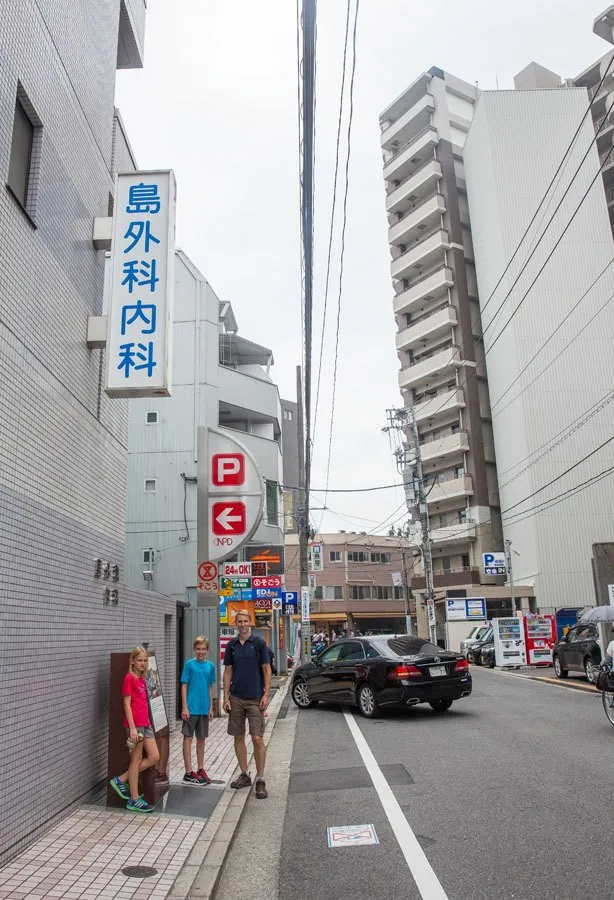
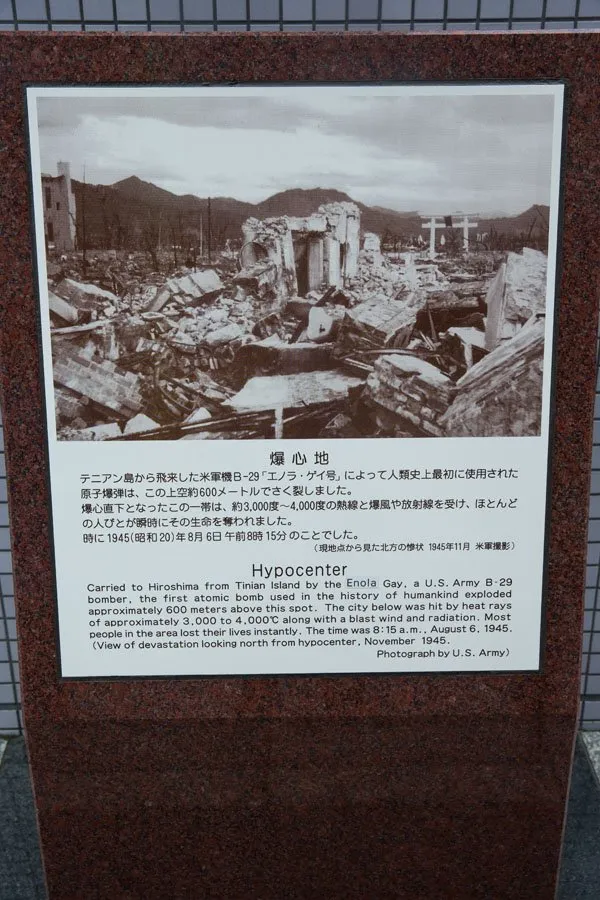
The hypocenter is the point where the atomic bomb was detonated, 600 meters off of the ground. It is marked by a small, marble monument on a normal, downtown street. We stared up into the sky, trying to imagine what it would have been like to have been here on that fateful day.
Finding the Hypocenter. If you are trying to find the hypocenter, look for Shimasjukhuset, a medical clinic, and the monument is located on the street right in front of the building. It is also located on our map above.
From the Hypocenter we walked back to the Atomic Bomb Dome and to the bridge over the Ota River.
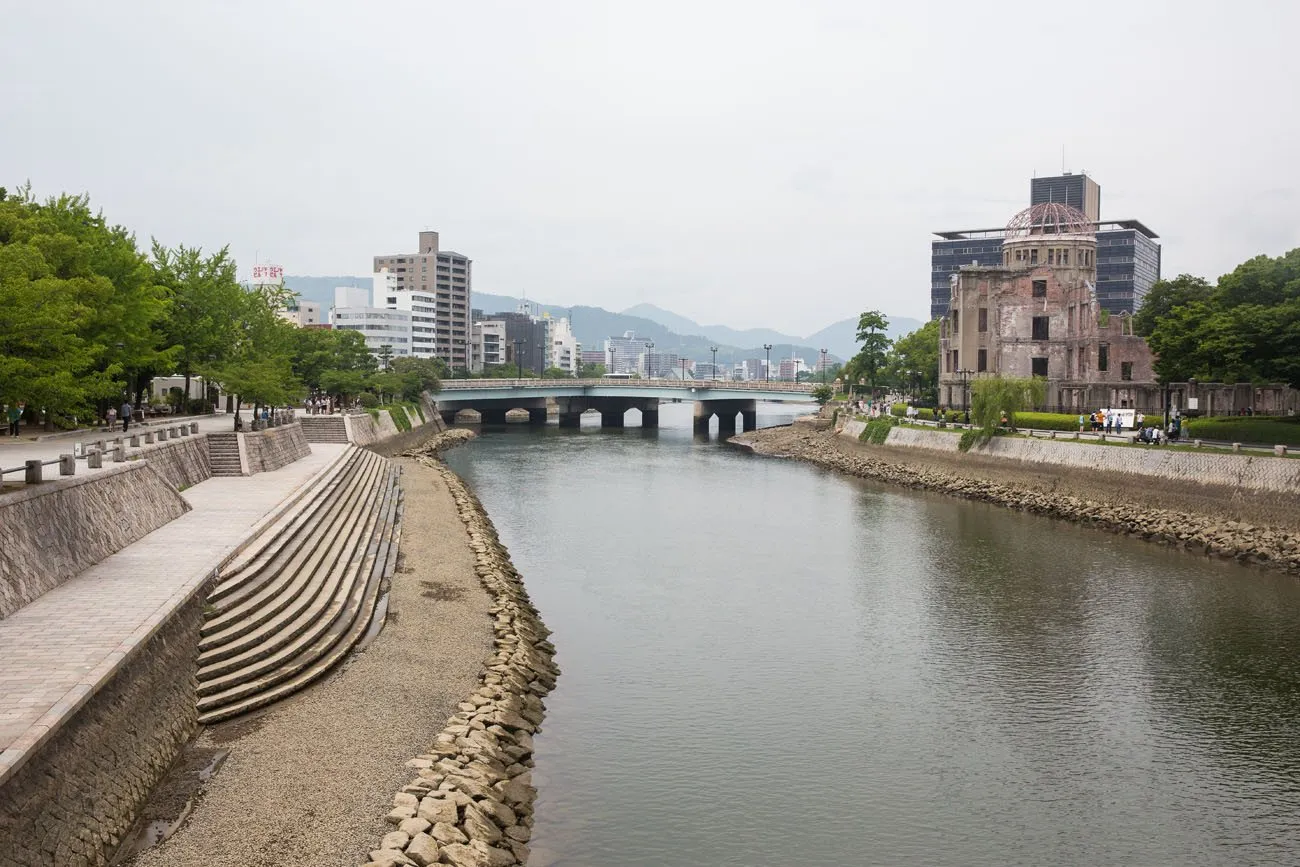
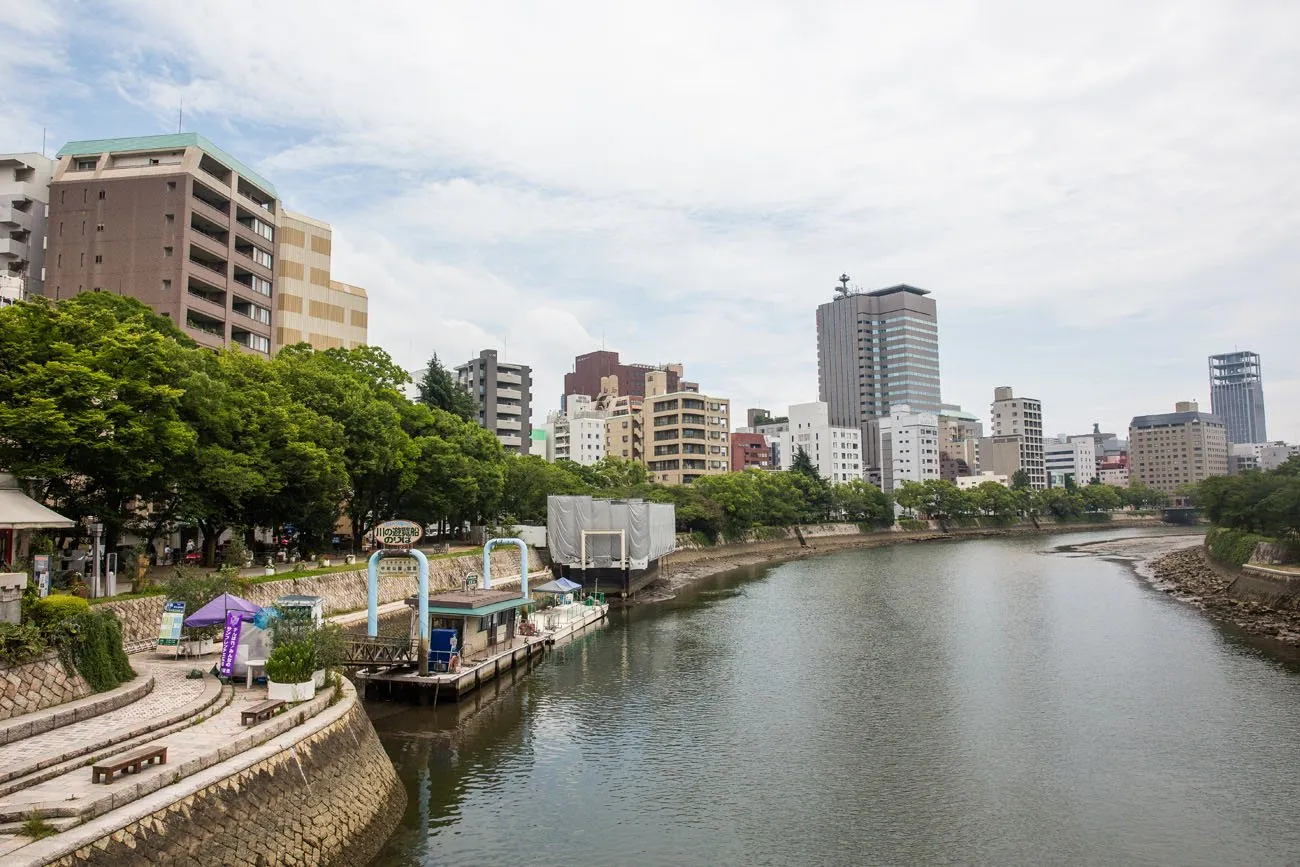
Children’s Peace Monument
The Children’s Peace Monument is a monument that stands in memory of all of the children who lost their lives as a result of the atomic bombing.
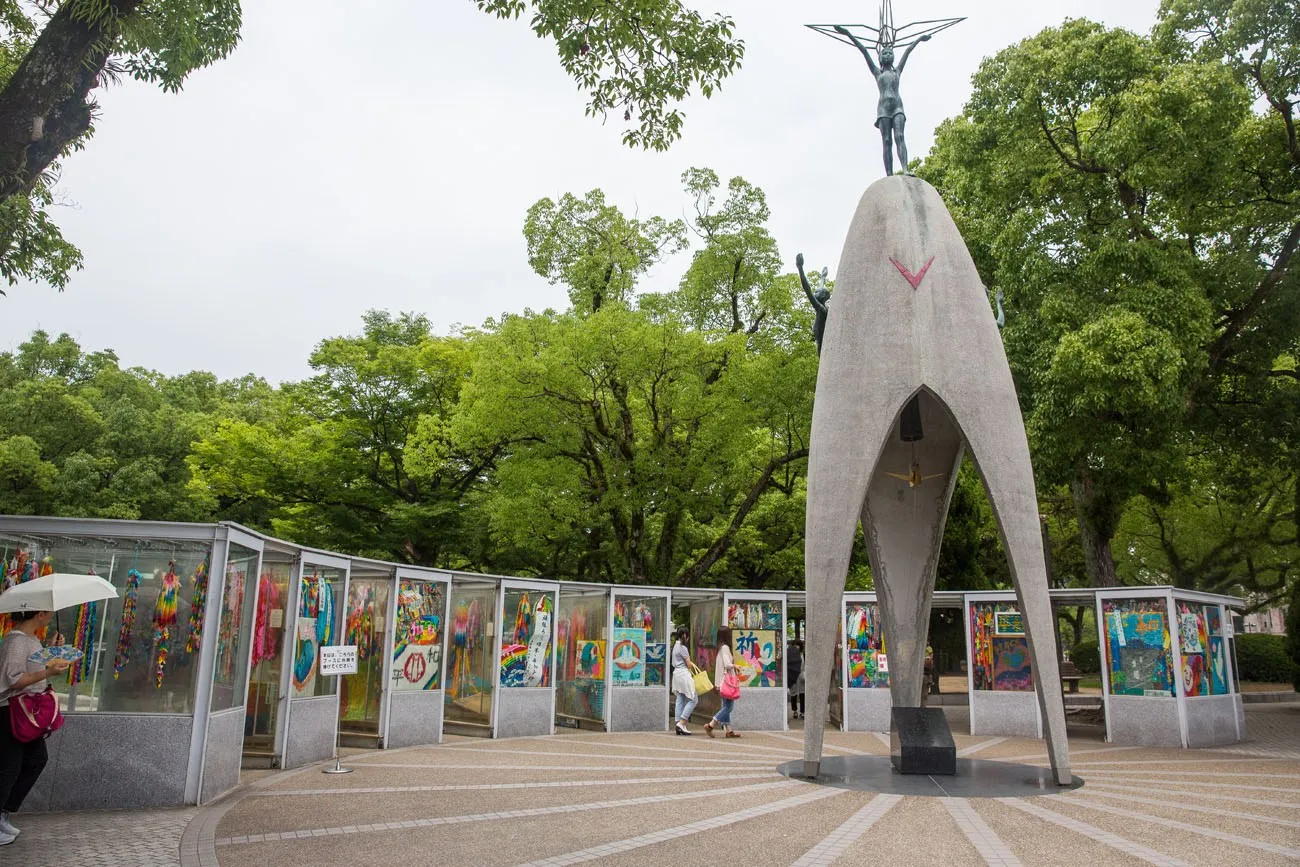
The Cenotaph
As we walked south through the park, next on the list of sites was the Cenotaph. The Cenotaph frames an “eternal flame,” and it is said that this flame will be burning until all nuclear bombs are eradicated. Unfortunately, I think that this flame is going to be burning for a long time.
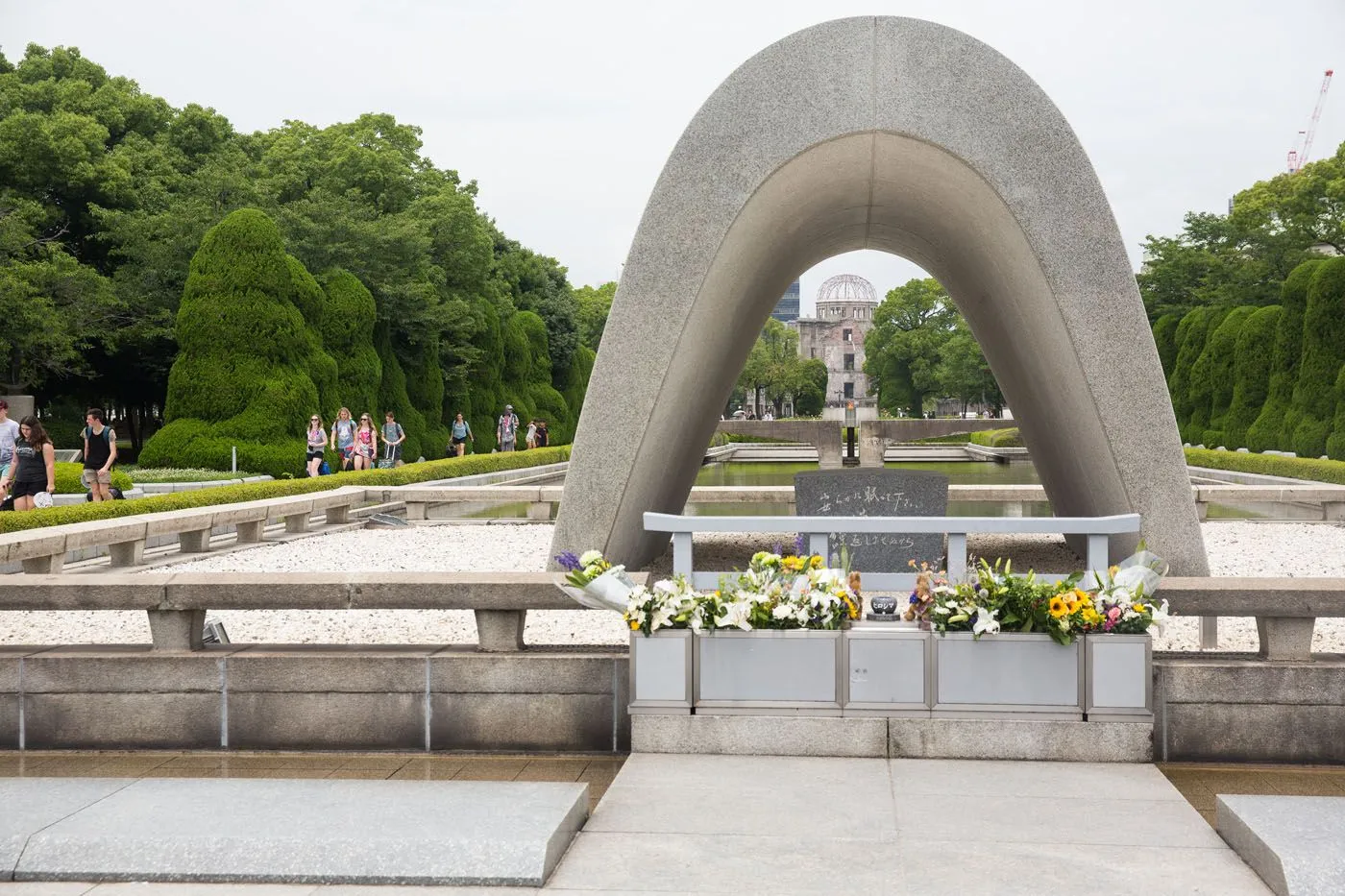
Hiroshima Peace Memorial Museum
It was wonderful entering the cool confines of the Hiroshima Peace Memorial Museum. It is July and it has been so hot during our stay in Japan. We were practically running into the museum just to get a break from the heat.
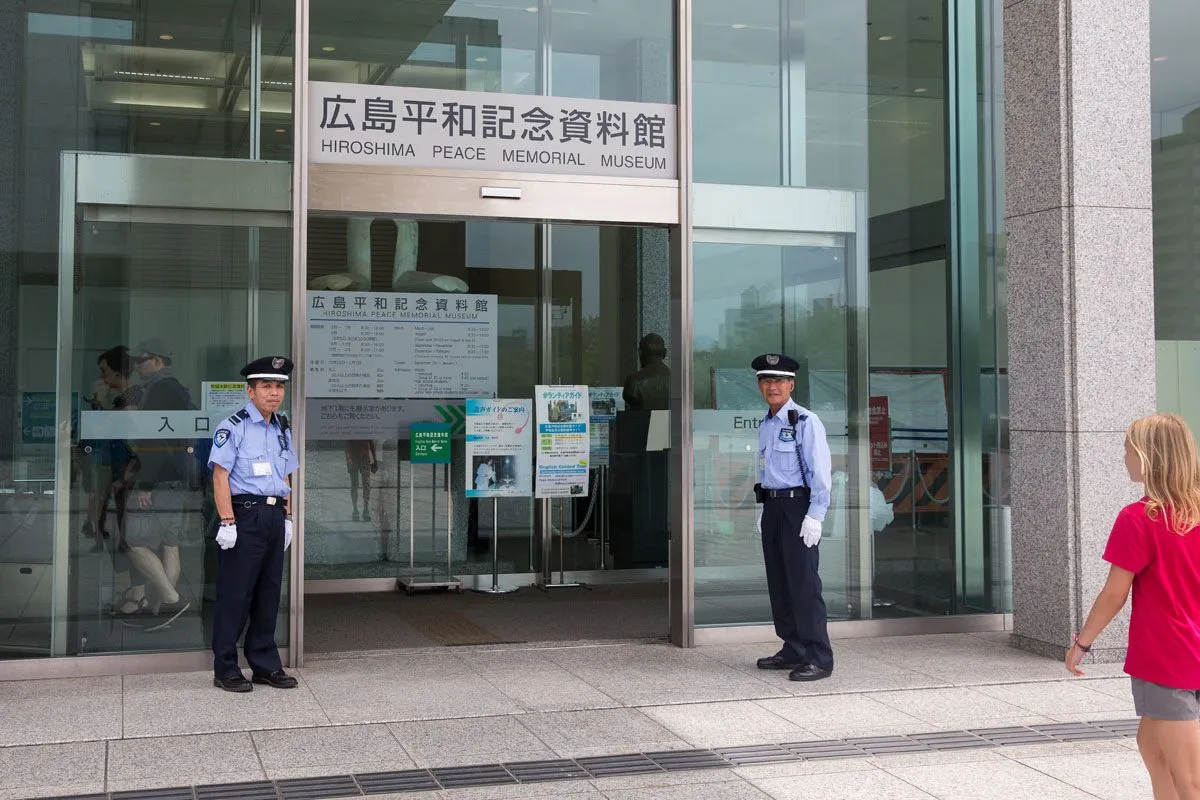
During our visit in 2015, the museum was undergoing refurbishment so most of it was closed. We were still able to walk through the best of the exhibits, giving us a fascinating, and somewhat disturbing, look into the destruction that occurred with the bombing of Hiroshima.
Here we learned about the impact the bombing had on the city of Hiroshima and its people. Some of the exhibits are very graphic. There are statues of women and children walking through the rubble, their skin literally hanging from their arms. Kara wondered why they looked like zombies, which then led to lessons on radiation sickness and the effects it has on the human body. None of them are very good.
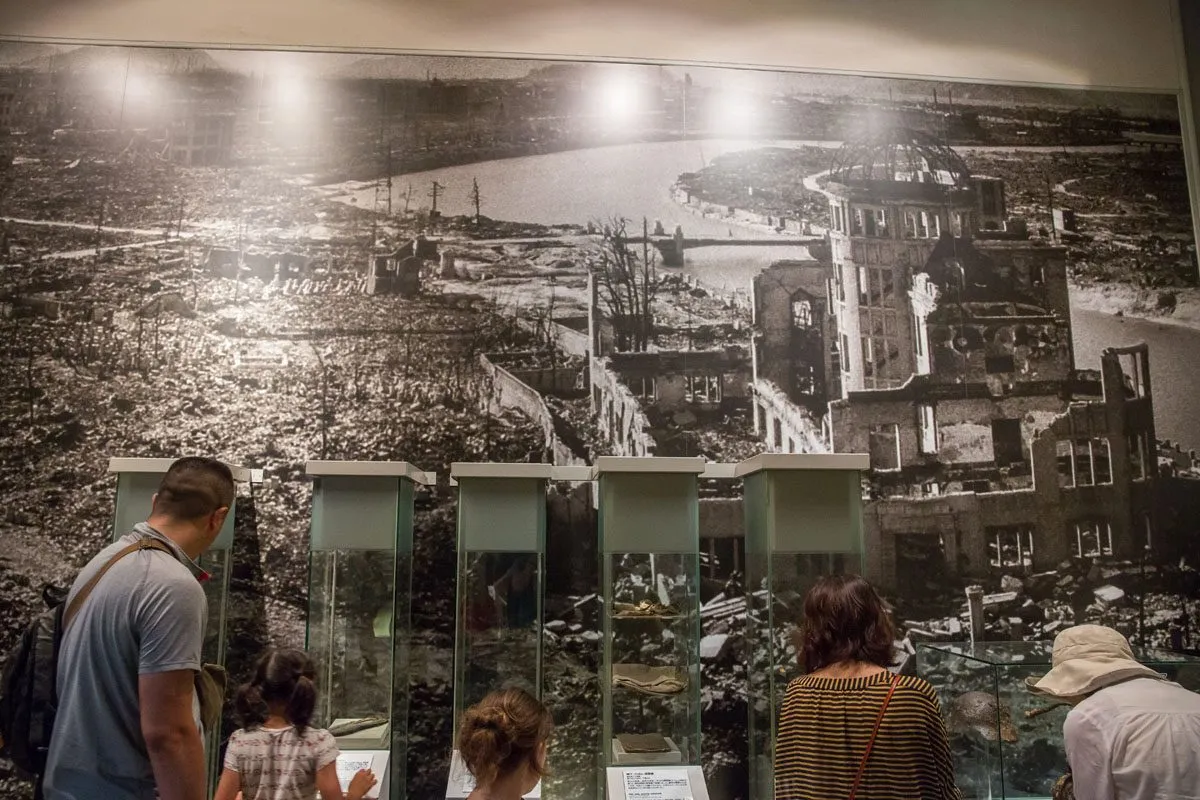
Enlarged photos on the walls showed the aftermath of the bombing…photos of the mushroom cloud, fields of rubble, photos of people who were injured, burned, or showing signs of acute radiation sickness. On display were roof tiles that had melted, a tricycle that had been incinerated, and clumps of glass bottles that had been melted together.
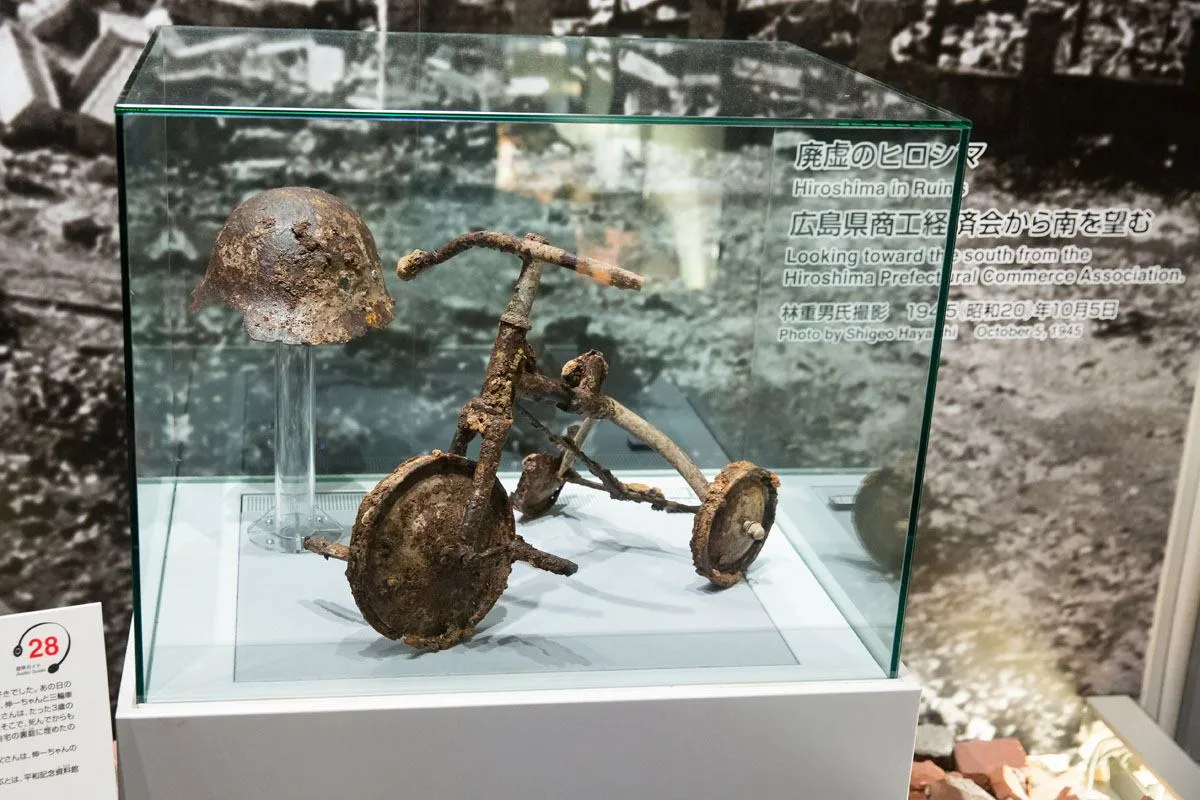
As we walked farther into the museum, we all learned more about the effects of radiation on the human body. Children born in the months after the bombing usually had some sort of birth defect. There were even deformed body parts preserved in jars, on display for all of us to see. It was morbid and depressing, but also another learning experience for the four of us about the atrocities of war.
Trying Okonomiyaki
Beginning with our arrival at the Hiroshima Station, our entire visit through the museum visit lasted two hours. This leaves plenty more time in the day to see more sites around Hiroshima. For us, it was time for lunch. Our history lesson, one of the best we have ever had, was over, and now it was time to try some new Japanese food.
With a little research, I found a place that serves okonomiyaki, a Japanese “pancake” cooked with a variety of ingredients. From the museum it was a fifteen minute walk to Okonomi-mura, a three level building that provides a variety of these restaurants on every floor. We randomly chose one of the busier places on the second level. As we took our seats, we had no idea what to expect.
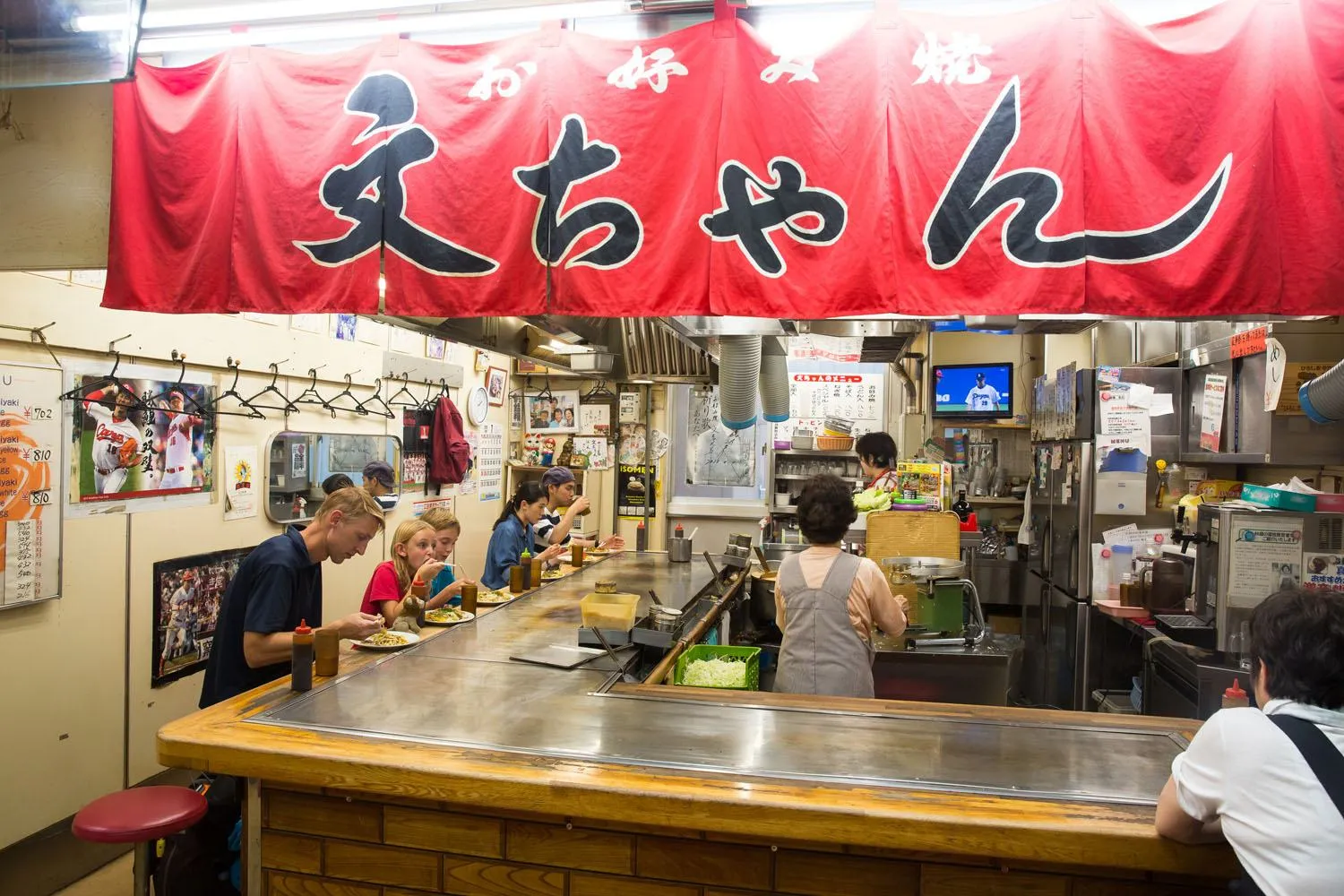
Okonomiyaki started as a cuisine where leftovers were cooked with a Japanese pancake batter. Nowadays, fresh ingredients are used. Our meal was cooked on the grill by two Japanese women right in front of us. The batter is spread on the grill, covered with cabbage, seasoned, and to this noodles and thin strips of beef are added. An egg is cracked opened onto the griddle and fried and the pile of cabbage is flipped over onto the egg. It is seasoned again and then served hot.
Watching the women cooking this was like watching a show. The food was delicious and another one of those meals where the enjoyment came not only from filling our stomaches with good food but trying something new and unknown.
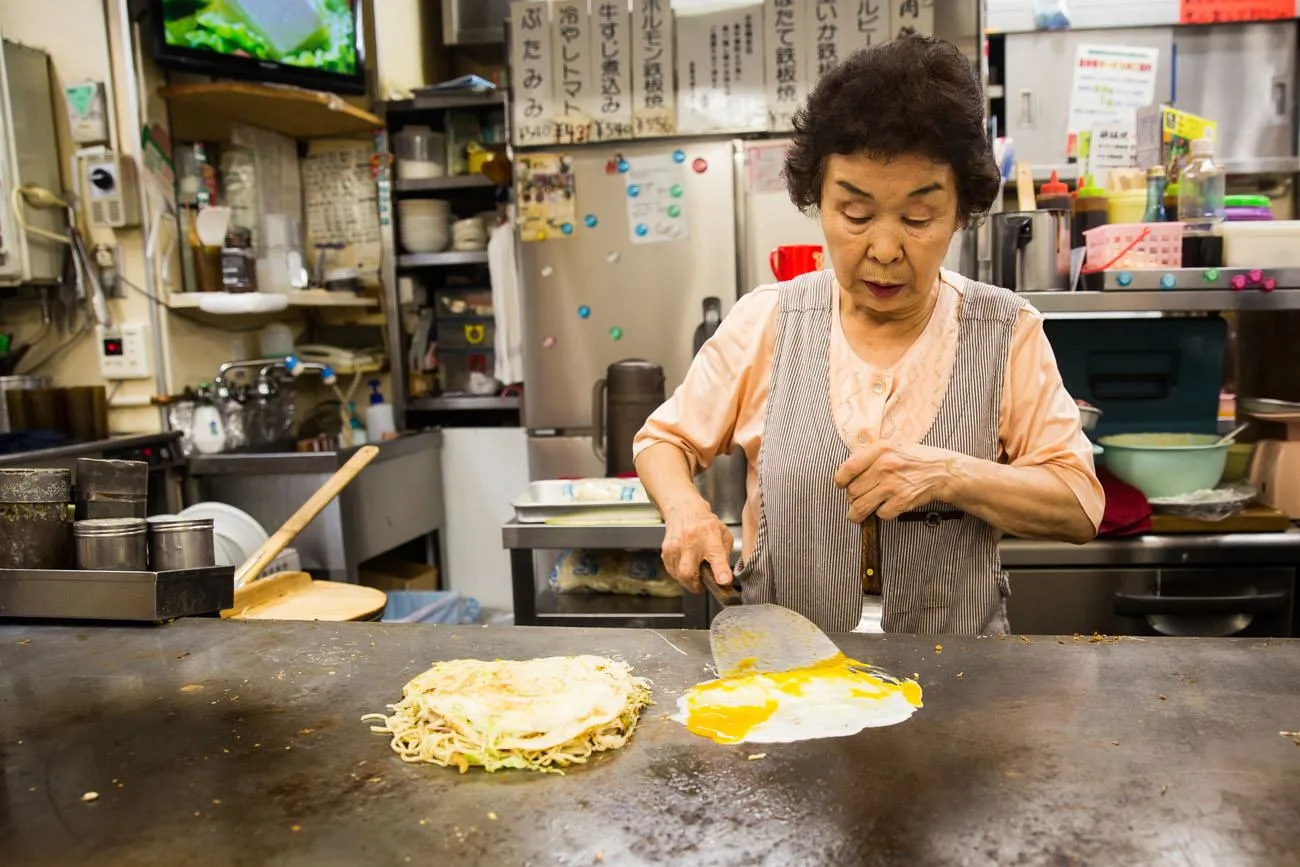
If we had wanted to, we still had plenty of time to visit more sites around Hiroshima. Honestly, the heat and humidity were getting to all of us, and the thought of slogging through the heat to another castle or landmark just wasn’t thrilling us. Our tour of Hiroshima ended here. We took the next Shinkansen back to Kyoto, ending our first of several day trips from Kyoto.
Is Hiroshima Safe to Visit?
This was one of our big questions before coming here. What happened to all of that radiation?
Were we risking our health by visiting Hiroshima?
The answer is no. Radiation levels are back to normal in Hiroshima and have been this way ever since the end of 1945. Since the bomb was detonated in the air, most of the radioactive material stayed in the air and did not settle to the ground. A tropical storm hit Japan 27 days after the bombing of Hiroshima, washing the dangerous radioactive material out of the air and making it safe to live here. This was all explained in the museum and is one of the most common questions that people have today.
With More Time
There are two other important sites in Hiroshima. The first is the Hiroshima Castle, located just a short walk north of the Peace Park. This castle was destroyed in the atomic bombing of Hiroshima and later rebuilt in 1958. It looks like a smaller version of Himeji Castle.
Miyajima and its iconic Shinto gate in the water is located south of Hiroshima. Getting there requires a combination of land transportation and a ferry ride one way, so it requires more effort in getting there than Hiroshima Castle. On average, this journey takes an hour one way.
Entrance Fee and Hours
The Atomic Bomb Dome, Ground Zero, Children’s Peace Monument, and Cenotaph are all free to visit.
Hiroshima Peace Memorial Museum cost: Get updated hours and pricing on the official website.
Getting Around Japan
We had the seven day JR Rail Pass, which gave us unlimited travel on JR trains for seven days. This includes JR metro and train lines in cities as well as most Shinkansen lines. We were in Japan for two weeks but have grouped our day trips into a time span of seven days in order to maximize the benefit of the JR Pass.
With Japan’s Shinkansen trains, a day trip to Hiroshima from Kyoto is fast, economical, and an excellent history lesson for those who are interested.
Are you planning on visiting Hiroshima? If you have any more questions, comment below!
More Information for Your Trip to Japan
KYOTO: Travel through Kyoto in Photos, learn about the best things to do in Kyoto, and read about our first impressions of Osaka and Kyoto.
DAY TRIPS FROM KYOTO: There are several great day trips you can take from Kyoto, including Himeji Castle and beautiful Nara, Japan.
TOKYO: Journey through Tokyo in photos and learn how to plan a day trip to Kamakura.
SUMO WRESTLING: Watching Sumo wrestling is one of the best things to do in Japan. We write about our experience and get tips on how you can do the same in our article How to Watch Sumo Wrestling in Japan.
TRAVEL INSPIRATION: Here are 30 great travel books and a list of the best travel movies to feed your wanderlust.
Planning a trip to Japan? Read all of our articles in our Japan Travel Guide.
All rights reserved © Earth Trekkers. Republishing this article and/or any of its contents (text, photography, etc.), in whole or in part, is strictly prohibited.
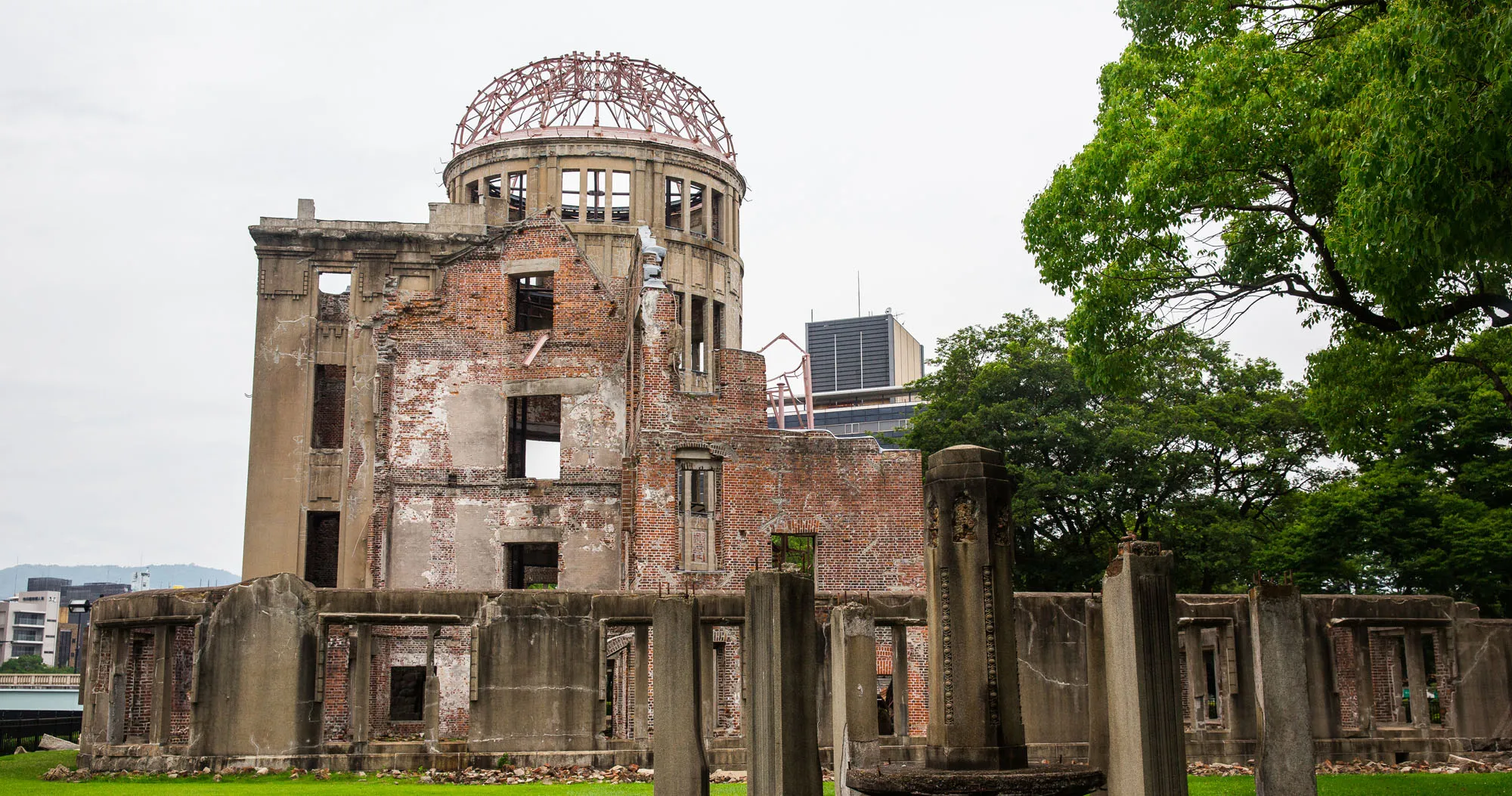
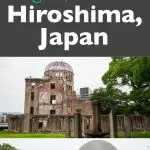
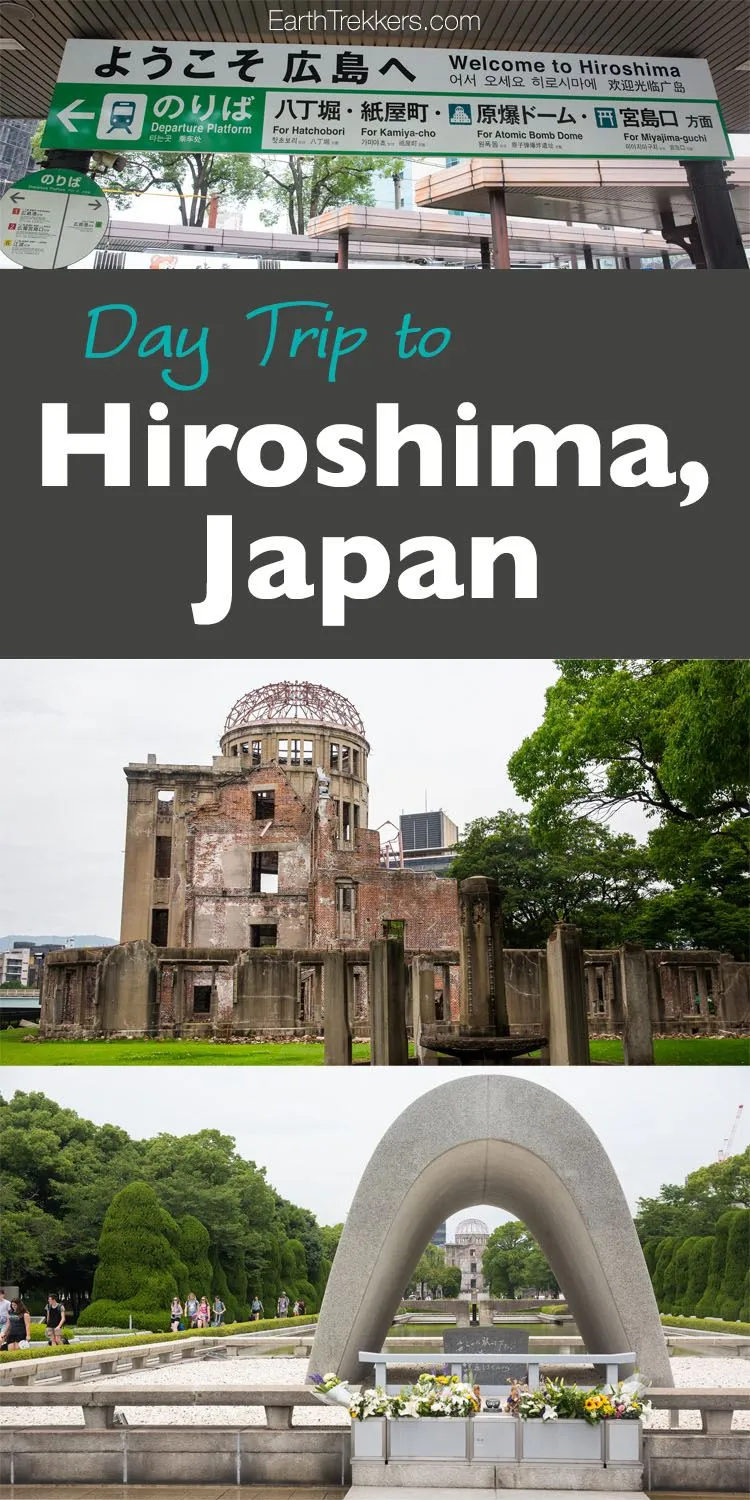
Comments 52